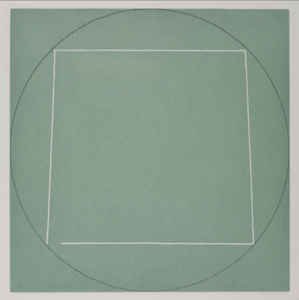
It’s a bit embarrassing when you’ve reviewed thousands of records in your life and, thusly, have probably contradicted yourself at least dozens, if not hundreds, of times. For example: I’ve been railing about the predominance of drone-, synth-, modular-synth-, and programmatic arpeggio-based audio for years. Yet, when a fulfilling example of the form comes along I’ll be the first to admit its relevance regardless because I don’t believe music should be judged based on its place in an extended trend and/or lineage. It’s a tough line to walk and I just hope I haven’t betrayed too many of you over the years with my wavering. But that’s not important right now; the reason we’re here is because Further Records outta Seattle has blessed Gumshoe’s lair with another gem so bright, shiny, and synth-y you’d think you’d died and gone to Korg heaven (HA, this guy almost certainly does NOT use Korgs; I won’t guarantee it but I suspect it.). Imaginary Lines seems to plod along at times, relying heavily on repetitive patterns for much of its duration, and that’s part of the genius of Jonathan Fitoussi because it rewards close, feverish attention and deducts pleasure points if you listen in the next room. Tracks like the aptly named “Triangulum” inch into your ear like a silkworm, laying eggs along the way, finally petering out into oblivion even while it camps out in your cerebellum. The most effective use of this strategy might be “Orion” (also the name of my favorite, possibly, Metallica song, if you’re keeping track [no pun intended]), which lights up the room with its mellifluous color wheel of pinks, oranges, and faded yellows, and never gives in to the instincts many of us might have when tasked with recording such a spare cut (i.e. a build-up of some sort, obnoxious beats, lame samples, vocals that ruin everything, etc.). In fact all that truly happens once the dominant sequence is established is the merging of another, even sparer, strand of synth that melts into the mainframe and, to my surprise, gives way to an extremely faint rhythmic component that fades just as quickly. Why is Imaginary Lines so magica though, trulyl? I wish I knew the contours of Fitoussi’s brain; if I did I wouldn’t be a rich man by any means, but I’d definitely be a better experimental musician. But I digest: that’s Side A; the flip is quite similar and yet still a must-listen for the reasons I’ll lay out for you. First, compositions like “Oiseau de Paradis” take a slightly different tact, investing in a foggier milieu that blends its sounds together with a touch more blur. Second, it’s an even calmer ride, if you can imagine that. Velvet synth pillows cradle your skull while the interweaving sequence flow through your bloodstream like an invasive bacteria, latching onto what it can and ensuring you won’t soon forget the experience on a chemical level. I’m most reminded of Steve Hillage’s calmer, more longform work around the time of Rainbow Dome Musick, not to mention a few of the recent Landing records and even some of SURVIVE’s more shimmering examples of synthness. But in the end it’s all about the very real (and imaginary) lines sketched by Fitoussi like a sound architect, his synth t-squares and programmed laser measurers (I’ll admit I google’d “architectural equipment” to fill this out) drafting the most effective route for the music to take. I’m all agog every time Further sends me a package, and if you still don’t understand why after reading this you’re probably one of those people who will simply never understand what it is I do (and that’s most people, btw, so don’t feel bad; hell my relatives still think I’m a newspaper reporter and I’ve literally never come close to being one outside an internship straight out of college). My people though; you know who you are, and you make it all worthwhile. Well, you and the brave artists who send pricey vinyl to my door knowing there’s a 50/50 chance I won’t get to it (and for those I miss I’m always truly sorry; it can be a heartbreaking enterprise, especially at the end/beginning of every year, when the seasons change and a huge batch of LPs/cassettes become, for all intents and purposes, obsolete). WOW! This is the longest Cerberus review I’ve ever written, so chew on it once or twice and BOW DOWN because I crank the shit out without a single error most of the time, and I don’t get paid to do it save by way of luxuriating in all the free consumer goods I receive that y’all have to pay for. I’m 38, and I don’t see any reason to stop, so keep the goodness coming and maybe I’ll just stick around until I die. Over and out.
More about: Jonathan Fitoussi
